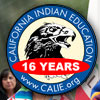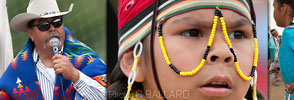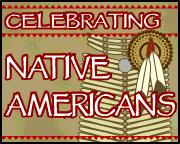 |
 |
 |
Publishing Corner: Indian Community: Science & Wonder Indian Heros: California Indian Art: CALIE Library: Academic Financial Aid: Tribal Governments: Indian Gaming: |

Defenders for The People: American Indian Akicita (Policeman) Warriors and Eldersby Roy Cook, Opata-Oodham, Mazopiye Wishasha: Writer, Singer, Speaker The purpose of National American Indian Heritage Month is to honor and recognize the original peoples of this land. American Indians military are motivated less by social mobility and more by their Warrior Tradition. American Indians are the smallest pan-ethnic group in the United States, comprising one percent of the U.S. population, but have a 33 percent or one in three per capita military participation rate. The Warrior Tradition is the most common explanation given by American Indian veterans for their military participation. Against the odds, America's first peoples have endured, and they remain a vital cultural, political, social, and moral presence. Tribal America has brought to this great country certain values and ideas that have become ingrained in the American spirit: the knowledge that humans can thrive and prosper without destroying the natural environment; the understanding that people from very different backgrounds, cultures, religions, and traditions can come together to build a great country; and the awareness that diversity can be a source of strength rather than division. Our bridge to the 21st century will rest upon the foundation we build today. We must teach our children about our past -- both the good and the bad -- so that they may learn from our successes and mistakes. We must provide our children with the knowledge and skills to permit them to surpass our own achievements and create a stronger, more united American community. We must provide them greater opportunity. It was the Iroquois who taught that in every deliberation we should consider the impact of our decisions on the next seven generations. The 1996 proclamation details their contributions to the past and to the future: In recognition of the important contributions of American Indian and Alaska Native peoples to our country and in light of the special legal relationship between the tribes and the Government of the United States, and obligations pursuant thereto, we celebrate National American Indian Heritage Month. NOW, THEREFORE, I, WILLIAM J. CLINTON, President of the United States of America, by virtue of the authority vested in me by the Constitution and laws of the United States, do hereby proclaim November 1996 as National American Indian Heritage Month. I urge all Americans, as well as their elected representatives at the Federal, State, local, and tribal levels, to observe this month with appropriate programs, ceremonies, and activities. IN WITNESS WHEREOF, I have hereunto set my hand this twenty-ninth day of October, in the year of our Lord nineteen hundred and ninety-six, and of the Independence of the United States of America the two hundred and twenty-first. The State of CA has celebrated California Indian Day since 1968. We continue to recognize this honor and add the Month of November to the recognition of our First Americans: American Indian Tribal people both urban and rural. As we learned in grade school, Indian was the name Columbus mistakenly applied to the people he encountered when he arrived in what he believed was the "Indies," the medieval name for Asia. Introduced in the 1960s, the term Native American offered a way of eradicating confusion between the indigenous people of the Americas and the indigenous people of India. The term American Indian also served that purpose, but raised other problems. Are the terms American Indian and Native American essentially synonyms, in the same way that the terms black and African American are often used interchangeably? Or is using the term American Indian instead of Native American the equivalent of using Negro instead of black—offensive and anachronistic? Is the insistence on using Native American to the exclusion of all other terms a sign of being doctrinaire? While these were once raging questions in the culture wars, they have now happily sorted themselves out. Over the years, the people whom these words are meant to represent have made their preference clear: the majority of American Indians/Native Americans believe it is acceptable to use either term, or both. Many have also suggested leaving such general terms behind in favor of specific tribal designations. As the publisher and editor of The Navajo Times, the largest Native American–owned weekly newspaper, puts it, "I . . . would rather be known as, 'Tom Arviso Jr., a member of the Navajo tribe,' instead of 'Arviso, a Native American or American Indian.' This gives an authentic description of my heritage, rather than lumping me into a whole race of people. |
CALIF INDIAN EDU NETWORK: AHMIUM.org | SCAIR.org | SDICENTER.org | APAPAS.com
—
WEB SITE DESIGN
www.calie.org COPYRIGHT 2008-Present • ALL RIGHTS RESERVED